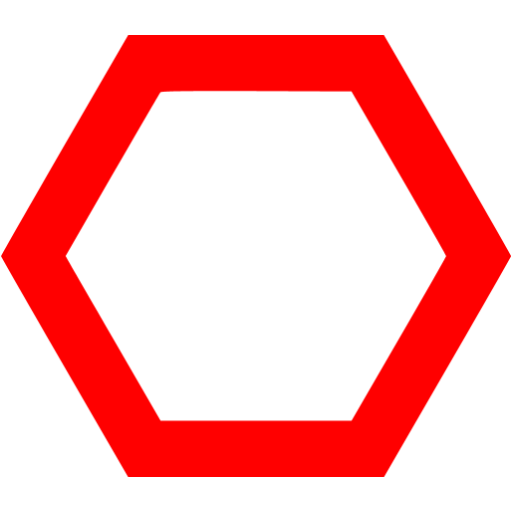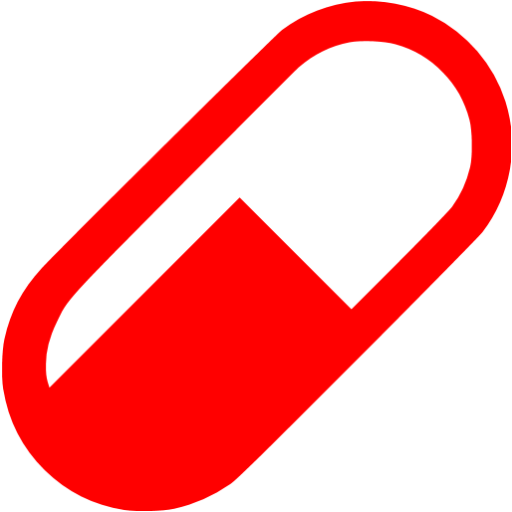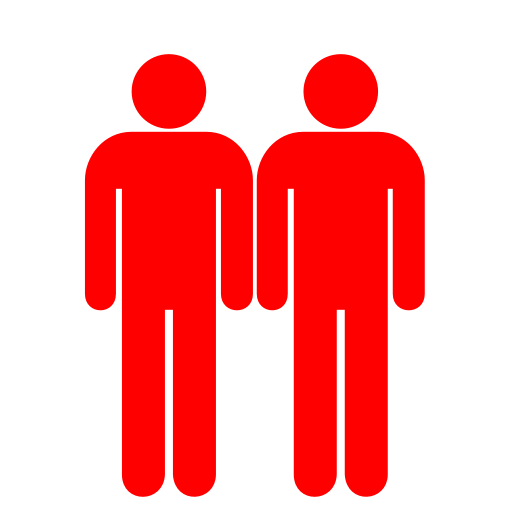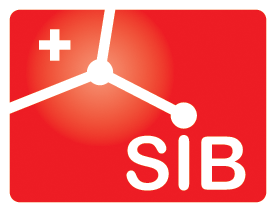Frequently Asked Questions
General, scientific and technical questions
- What is the general idea behind SwissADME?
- Can I use SwissADME with structures not considered as small molecules (for instance peptides, proteins, other macromolecules)?
- How many molecules can I submit to SwissADME?
- Should I name the inputted molecules?
- Can I draw in the sketcher and add to SMILES list more than one structure at a time?
- Does aromatic or kekule representation change anything for prediction?
- Is it preferable to input the neutral form of the molecule?
- Can I cut-and-paste a molecule for input?
- Sometimes a pop-up box with Cannot retrieve sketcher instance from iframe appears. What does it mean?
- Why is the time of computation fluctuating?
- Is the SMILES returned in the result panel canonical?
- Why does a broken image appear in the result panel instead of the structure of the molecule?
- How are computed molecular descriptors and physicochemical properties ?
- Is TPSA accounting for sulfur and phosphorus atoms?
- Are the lipophilicity values given for the neutral form of molecules?
- Why log P predicted values do vary for the same molecule / Which is the best log P predictor?
- How pharmacokinetics predictions work / To what extent the predictions of pharmacokinetic behaviors are trustable?
- How to interpret the Log Kp (skin permeation) value?
- Why druglikeness filters do not returned the same prediction?
- The H-bonds acceptors counted in the Physicochemical Properties section exceed 10 but there is no violation in the Lipinski rule in the Druglikeness section. Why?
- What do the ellipses in the Graphical Output output represent?
- I understand the goal of submitting a molecule to SwissSimilarity or SwissTargetPrediction, but why re-running a SwissADME job by clicking the red pill icon?
- The potentially problematic fragments returned by PAINS and Brenk filters are almost never the same. Why?
- How to interprete Synthetic accessibility value?
- Can one export the output panel in a PowerPoint slide?
- Is it possible to have the result values is an Excel sheet?
Answers
What is the general idea behind SwissADME?
The main idea is to give free access to a number of parameters and predictive models in order to compute the physicochemistry and estimate the pharmacokinetics, druglikeness and medicinal chemistry friendliness of small molecules. All selected methods are in-house, implemented from publications or directly computed through non-commercial executables. Apart from performance and robustness, all models should be free-for-academics, easy to analyse and straightforwardly translatable to chemistry for drug design purposes. Besides, some effort were put on simple and flexible input/output as well as clear layout in the web page. This allows experts as well as nonexperts to make use of the website for their research. SwissADME was made for application in drug discovery and medicinal chemistry contexts, which stresses for a balance between accuracy and speed in order to deal with a large number of molecules. Because of the predictive nature of the data returned by SwissADME, values should be handled with due care. Extra precaution should be taken if using SwissADME for any other activities outside the scope of drug design/discovery.
Can I use SwissADME with structures not considered as small molecules (for instance peptides, proteins, other macromolecules)?
It is feasible in practice provided that the structure can be described as a SMILES notation. However, most of the proposed models have an applicability domain close to druglike organic compounds to very short oligopeptides or short oligosaccharides. For severely different molecular structures, it is unlikely that the information returned by the predictive methods would be of any relevance. SwissADME is intended to be employed in the context of drug discovery and medicinal chemistry. Any other usage requires extreme caution in the interpretation of data.
How many molecules can I submit to SwissADME?
If you have more than one molecule to submit, it is recommended to make a batch list of multiple entries in the right-hand text box. Each line must contain one entry (SMILES and optionally a name separated by a space). Do NOT exceed 200 entries per list. Do NOT launch several calculations at the same time, please wait for the whole calculation to be terminated before running the next batch. You are welcome to run such batch calculations one after the other if the total number of molecules submitted does not exceed 10,000.
Should I name the inputted molecules?
It is not mandatory as unnamed entries will be automatically noted as Molecule followed by its rank number in the SMILES list. However it is recommended for the sake of ease in the output analysis since the name of the molecule appears as a title in the output panel and as a legend in the Graphical output. You may want to see how it goes by clicking on the Fill with an example button and submit these entries for calculation.
Can I draw in the sketcher and add to SMILES list more than one structure at a time?
You should not draw multiple unconnected molecular fragments in the sketcher because they would be considered as a unique structure and appear in one single row separated by a dot in the SMILES list. A correct input list must involve one single molecule per line, optionally followed by name separated by a space.
Does aromatic or kekule representation change anything for prediction?
No. Either aromatic or kekule description can be inputted without impacting the output values as one first step in the process is a standardization of the molecular structure including dearomatization (i.e. kekulization).
Is it preferable to input the neutral form of the molecule?
Yes, definitively. The SMILES entry is taken as given and not neutralized explicitly for every models. As many of the proposed models are trained on the neutral form of compounds, submitting an ionized structure would lead to severe biases in the predictions unless it is a permanent ion or a zwitterion. Be careful, the user is responsible for the microspecies he submits.
Can I cut-and-paste a molecule for input?
You can easily paste SMILES in the input list text field or in the sketcher for subsequent modifications. Besides, the sketcher recognize other format (SMARTS, SDF, MRV for instance).
Sometimes a pop-up box with Cannot retrieve sketcher instance from iframe appears. What does it mean?
This message is linked with Chemaxon Marvin JS. It means that the sketcher is not well connected to its remote server, so in that case some fonctions may not work properly. To our experience, it happens sometimes when trying to refresh the SwissADME page within the web browser. The user is still able to draw molecules but can not copy to the SMILES list. It is recommended not to refresh any SwissADME page but to click on Home (second tooldbar) instead.
Why is the time of computation fluctuating?
The time needed for the user to get result output in the web page depends on multiple factors. Firstly and obviously the number of structures submitted since each line of the SMILES list is treated sequentially. Secondly, many computations are atom-dependant and therefore the bigger the molecule the longer the computation. Thirdly, all jobs are submitted on a single (multi-core) server, whose load is impacting directly to what extent the user has to be patient. You can expect the calculation to take 1 to 5 seconds per druglike structure. The whole process includes page display as well as generation of exportable files and data (CSV, clipboard).
Is the SMILES returned in the result panel canonical?
Yes, it is the SMILES canonicalized through OpenBabel.
Why does a broken image appear in the result panel instead of the structure of the molecule?
Something got wrong. The SMILES entry could not be interpreted. All values possibly given in the panel should be neglected since the calculations have not run correctly. It is warmly recommended to double-check the SMILES input incriminated and to regenerate one with the sketcher, in case.
How are computed molecular descriptors and physicochemical properties ?
SwissADME relies on OpenBabel definition for descriptors like atom/bond/group counts and molecular refractivity.
Is TPSA accounting for sulfur and phosphorus atoms?
Yes it does. The topological surface area value returned is strictly following the method described in the seminal paper by Ertl et al. (2000).
Are the lipophilicity values given for the neutral form of molecules?
All predictions are for log Po/w, i.e. the partition of the neutral form of the molecule under study between water and n-octanol. Accordingly all predictive methods are trained on multiple thousand of compounds in their neutral form, plus a few zwitterions and permanent ions. Therefore it is mandatory to input a relevant uncharged SMILES in order to have a trustful prediction of log P. Inputting an ionized molecule is not recommended since the predicted values would be of doubtful relevance. The distribution of all forms of a compound between water and n-octanol is given by the log D at a certain pH. This requires having or predicting the ionization constant of the molecule. Neither log D nor pKa predictive method are implemented in SwissADME yet.
Why log P predicted values do vary for the same molecule / Which is the best log P predictor?
All Log P predictive methods accessible through the SwissADME interface are different and have pros and cons. A thorough description and benchmark can be fund in Mannhold R. et al. (2009). As stated by Arnott JA. et al. (2012), the common acceptance that calculation of small molecules lipophilicity is straightforward and as such can clearly forecast the success of compounds promoted at later stages of drug discovery programs is basically wrong. It is very difficult to judge of the quality of the predictive power of a particular method. Whereas fragmental approaches (e.g. WLOGP, XLOGP) tend to overestimate the lipophilicity of large molecules, topological methods (e.g. MLOGP) bias the prediction around an average value. All models suffer of overfitting and despite of trained on multiple thousands of experimental octanol/water measures, their accuracy is clearly structure-dependant. Currently, we provide log Po/w predictions as is from methodologies as diverse as possible including our original physics-based iLOGP, which is meant to be less prone to overfitting biases. Today, one still needs an expert eye to gauge the relevance of log P predicted values in relation with the chemical structures. As a pragmatic consensus approach, if multiple predictors returned a similar value, the probability of this one being a good prediction is higher. Similarly, an average of carefully selected predictions can be a sensible way to balance the different methods strengths and weaknesses.
How pharmacokinetics predictions work / To what extent the predictions of pharmacokinetic behaviors are trustable?
Several given pharmacokinetics-related characteristics (P-glycoprotein substrate, CYP450 inhibitors) are predicted using in-house Support Vector Machine (SVM) models. These are able to predict if a molecular structure has more probability to be in one class of a binary behavior (e.g. P-gp substrate or non-subtrate) based on simple molecular/physicochemical descriptive comparison with molecules of known behaviors. Again, our leitmotiv is to build predictive models relying on simple descriptors in order to be freely available for academics and easy to translate to chemical design. The performance of the such models are given in term of internal accuracy (10-fold crossvalidation) and external accuracy (on extensive external test set).These SVM models are meant for rapid prediction in the early steps of drug discovery. In this context, they are generally used as one criteria for promotion among many others or for prioritization of subsequent more demanding computational or experimental determination of a given pharmacokinetic property.
How to interpret the Log Kp (skin permeation) value?
This prediction of permeability coefficient (Kp) for the transport of compounds through mammalian epidermisis is based on the linear model by Potts RO. and Guy RH. (1992). The more negative the log Kp the less skin permeant the molecule. For example, Diclofenac is a good topic anti-inflammatory with a predicted log Kp = -4.96 (cm/s) and on the contrary Ouabain has little chance to cross skin with a predicted log Kp = -10.94 (cm/s).
Why druglikeness filters do not returned the same prediction?
These filters are crude and fast prediction of given molecular structure to be druglike, based on ranges of molecular/physicochemical properties (e.g. molecular weight or log P). The properties accounted for and the broadness of the range vary from one filter to the other because these latters were tailored (in general) from the proprietary collection of various companies. A consensus view is certainly a wise approach to behold druglikeness, so the multiple filters accessible through SwissADME.
The H-bonds acceptors counted in the Physicochemical Properties section exceed 10 but there is no violation in the Lipinski rule in the Druglikeness section. Why?
Lipinski considers strictly all nitrogens and oxygens as H-bond acceptors and all oxygens and nitrogen with at least one hydrogen as H-bond donors. The counts of H-bond capacities in the Physicochemical Properties section are based on slightly more elaborated rules; for instance, aliphatic fluorines are considered as acceptors and aniline nitrogens are neither donor nor acceptors. For the sake of precision, the related violations for the Lipinski rules are noted "NorO" and "NHorOH" in order not to strictly refer to H-bond.
What do the ellipses in the Graphical Output output represent?
This is the so-called BOILED-Egg model. All details can be found in the original publication, freely available here. It is a robust yet simple and intuitive graph prediction of passive intestinal absorption and brain penetration, as a function of lipophilicity and apparent polarity (described by WLOGP and TPSA, respectively). If plotted molecule falls inside the white ellipse, the probability of a good intestinal absorption is high. If plotted molecule falls inside the yellow ellipse (i.e. the yolk), the probability of a good BBB crossing is high. The white and yolk of the BOILED-Egg are not mutually exclusive and molecules predicted as not absorbed by the GI and BBB non-permeant are located in the grey area or even further outside the range of the plot (and thus counted in the Remarks box). The enhanced version embedded in SwissADME include color-coding of the points in relation to predicted active efflux by the P-glycoprotein (as explained in the legend on the right of the plot). Besides, interpretation of the graph is improved by interactive actions (add molecule names on the graph, fly-over point to see the chemical structure, click on the point to scroll down to the related panel).
I understand the goal of submitting a molecule to SwissSimilarity or SwissTargetPrediction, but why re-running a SwissADME job by clicking the red pill icon?
Indeed the user has the possibility to submit directly SwissDrugDesign job for a molecule in the output panel by clicking one of the red icons just below the name. SwissSimilarity (gemeli) allow for ligand-based virtual screening, SwissTargetprediction (target) to predict the most probable target and SwissADME (pill) can be resubmitted for the molecule under consideration. This latter procedure allows to get, for instance a less crowded BOILED-Egg or to confirm first predictions.
The potentially problematic fragments returned by PAINS and Brenk filters are almost never the same. Why?
That's totally normal. Those filter are complementary. The Structural Alert returned by Brenk is purely knowledge-based with a compilation of chemical moities known to be toxic, unstable, dye and so on. In contrast, most of these fragments were removed for the statistical analysis leading to the detection of PAINS. This latter return chemical fragments that are common to molecules being frequent hitters (a.k.a. promiscuous compounds), i.e. molecules that were observed returning false positive signal in multiple orthogonal assays.
How to interprete Synthetic accessibility value?
Synthetic accessibility value is a score based on the fragmental analysis of the structures of more than 13 milion compounds immediatly shippable by vendors with the assumption that the more a molecular fragment is frequent, the easier the molecule is to make. This fragmental contribution method is corrected by descriptors for molecular size and complexity. Finally the score is normalized between 1 (easy synthesis) and 10 (very difficult synthesis).
Can one export the output panel in a PowerPoint slide?
Not directly at the moment. However the panels are made to fit well a standard computer display. So a screenshot can be pasted in any presentation application then. Same is true for the graphics output. The Bioavailability radar can be saved using any Web browser capability, through their contextual menu. You can save it as an image file.
Is it possible to have the result values is an Excel sheet?
Yes, you can do it in two different ways. The first one is to export in comma-separated text file by clicking the CSV red icon just under the SMILES list. You may want to open this file in any text or spreadsheet application. The second way is to copy the values in the clipboard of you computer by clicking the second red icon next to the CSV. You can then paste the values in whatever compatible program for further processing.







